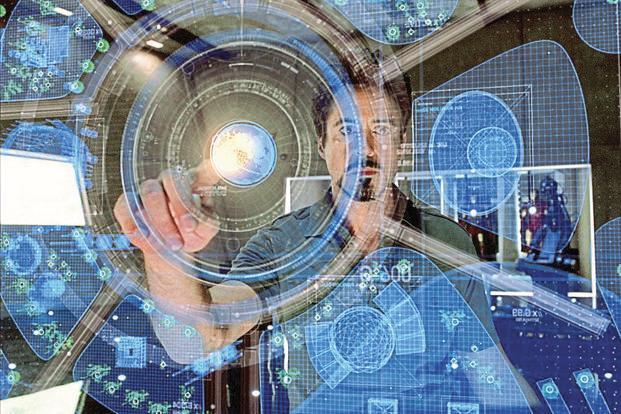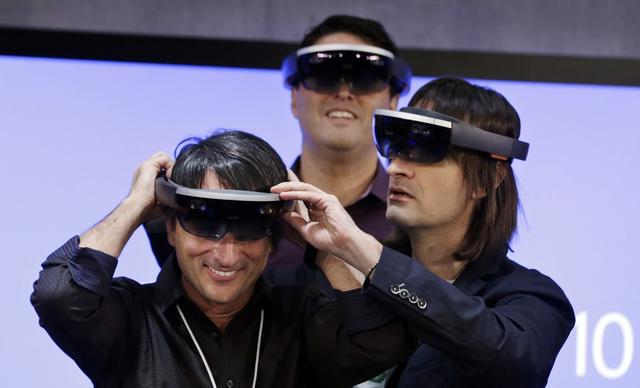Pokémon Go is a free AR game for Android and iOS smartphone users. It swept the virtual and real world like a storm. It hasn't happened before. With AR games, players can search for PokeStops in places (such as public art facilities, places of interest) through GPS, Google Maps, and then search for Poke Balls and other things. All this does not require a VR helmet, which means that the AR technology has matured. Speaking from "Pokemon Go" Players need to go outside and discover the elf around them through a smart phone. The game incorporates a realistic map and marks certain areas, memorials, or buildings as Pokestops, where you can get a sprite or elf. "Pokemon Go" was launched on July 6th. It has been a month now. Its popularity has exceeded the Candy Crush Saga developed by Facebook. However, the game still brings many problems. From the very beginning, "Pokemon Go" is the darling of gamers, with over 100 million installed capacity. Since the launch of the new version of the game, the criticism has been heard and the evaluation has been very bad. Some players have illegally invaded certain places in order to search for virtual monsters. . Niantic is independent from Google’s parent company, Alphabet, which developed Pokemon Go with Nintendo. Nintendo holds approximately 32% of Niantic shares. Users can download "Pokemon Go" free of charge, if you want to complete the task, you can only purchase in-game props. Some brands, such as McDonald's, are very keen to advertise in the game and thus drive the growth of Niantic's value. Like any other fashion and games, the frenzy of "Pokemon Go" will eventually recede. Nevertheless, there is a fact that we cannot ignore: Microsoft and Magic Leap and other companies have begun to bet on the need for AR, VR and the real world. Combine to create a world of MR (mixed reality) for users and businesses. Why do you want to do this? Because they are convinced that MR has the potential to become the next large-scale computing platform. VR, AR and MR Create a completely virtual world on a computer or network, this is VR; AR is different, it needs to deal with the real world, the virtual world is superimposed on the real world, which is equivalent to adding some information layers; MR will be VR and AR The technologies are mixed together so that both worlds can achieve the best results. The direction of major companies is different. Facebook and Sony have taken a fancy to VR. There are rumors that Apple is developing a prototype VR helmet. In early 2015, Google gave up "Google Glass", but in spite of this, it launched the Tango AR platform. Intel is also developing AR smart glasses called Remote EyeSight. Ivan Sutherland first foresaw the arrival of AR technology. As early as 1968, he developed the first AR system. However, AR technology has only grown up to this day. It is used in the automotive industry and theme parks. Sports TV programs, military industry, online marketing. The popularity of the AR term has been attributed to Jaron Lanier, an American writer and computer scientist and classical music composer. In 1985, Lanier and Thomas G. Zimmerman left the game company Atari and founded VPL Research, the first company in history to sell VR glasses and gloves. In 1995, Nintendo launched Virtual Boy, a VR device, which ceased production after one year. Another company also wants to bring AR to smartphone users. It is Layar. Later, a VR world that did not require a helmet appeared before the world. It was "Second Life" developed by Linden Lab. The game was launched in 2003, but the game developer was established in 1999. "Second Life" shook the world of technology, but the boom has receded. So how did the concept of MR come about? Sixteen years ago, the Minority Report was born. In the movie, we saw Tom Cruise operate an interactive display that can be controlled with his eyes. In the recent “Iron Man†movie, we also saw smarter imaginary partner Jarvis of superhero Iron Man, who could provide it regardless of what information Tony Stark wanted, and it was displayed in holographic form. On June 30, scientists from the National Physical Laboratory of the United States said in an interview that the new Iron Man AR technology can help surgeons and firefighters. Microsoft has introduced Kinect, an input device that can sense motion and allow players to play games with gestures and voice commands. Now Microsoft will bet on the MR holographic computer, which it named HoloLens. Microsoft believes that "holography is the next step in computing evolution." Microsoft said on the website: "Mixed reality can incorporate 3D holographic content into the physical world, adding context to your holographic real world, and changing the proportions. Users can interact with digital content and interact with the world around them." From the very beginning, we all considered HoloLens as an AR device. At this year's Taipei Computer Show, Microsoft emphasized that it is an MR device. HoloLens is equipped with sensors. When we are ready to choose a hologram, we can choose by looking at the moving cursor. We can also use gestures to open the APP, select tools, change the size, and can also drag and drop holograms to navigate, select, open, command, and control the app with voice commands. HoloLens is a trademark of MR In July of this year, at the Global Developers Conference in Toronto, Japan Airlines demonstrated a HoloLens application that allows engineers to approach a full-size, computer-simulated jet engine at close range. The APP can highlight the engine components and tell the engineers how the various components work together. The real engine cannot display this way. With the HoloLens version of Skype installed, people in the address book that we saw and dragged can also see that they can know what kind of hologram we are overlaying on the physical object. This month, Microsoft began selling the HoloLens Developer Kit to developers at a price of $3,000, which is beneficial to the growth of the AR helmet developer community. For the time being, only U.S. and Canadian developers can purchase helmets through Microsoft's online store, up to five. If the devices are based on the Microsoft Windows platform, they can be interoperable. In simple terms, if the user wears the HTC Vive virtual reality helmet, they can collaborate with the person wearing the HoloLens helmet. Microsoft executives have said that there are already some companies working with Microsoft, including HTC, Lenovo, Asus and Hewlett-Packard. MarketsandMarkets, a market consulting company, believes that in 2014, the global AR market will be approximately US$1.72 billion and will grow to US$56.8 billion by 2020. Compared with computers, VR, AR, and MR are more intuitive. Technology companies hope that predictions will come true and that they can become the next computing platform. automatic mechanical watch,mechanical watch box,mechanical watch components,automatic watch movement Dongguan Yingxin Technology Co., Ltd. , https://www.dgyingxintech.com
